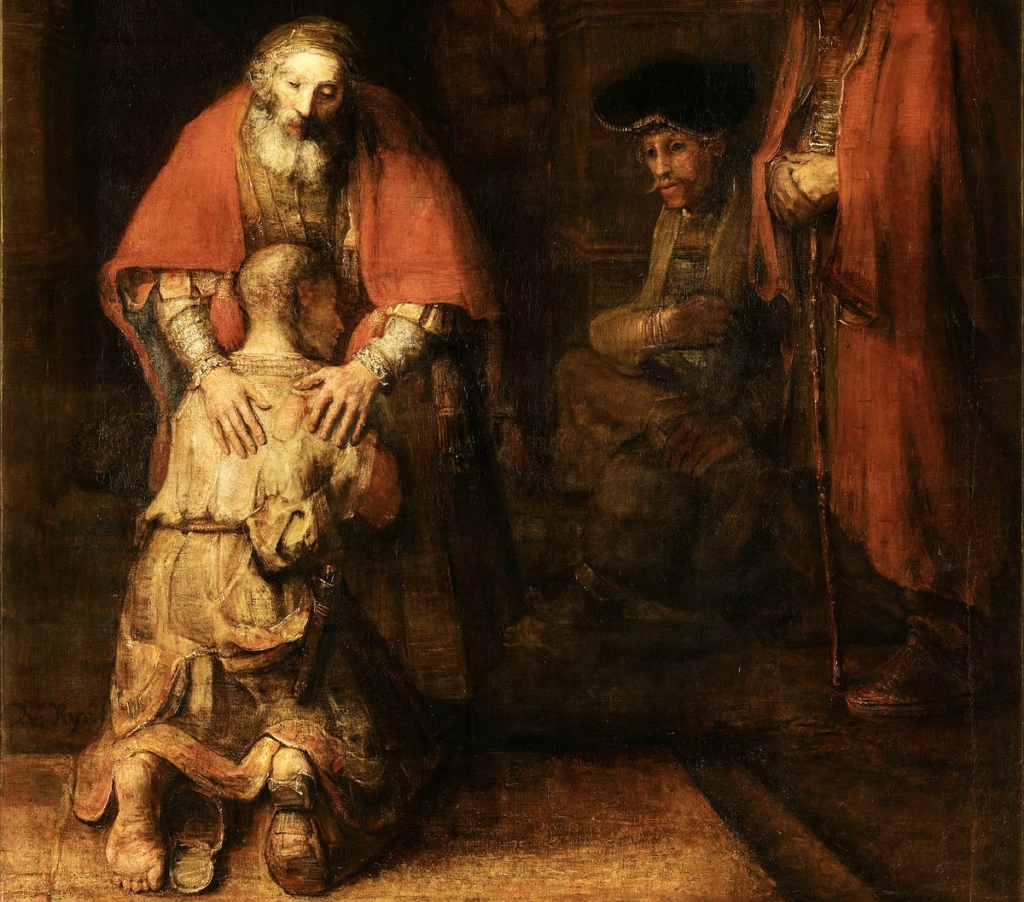The Return of the Prodigal Son

The Return of the Prodigal Son
Brian Zahnd
In 1669 the great Dutch painter Rembrandt turned Jesus’ most famous parable into one of his masterpieces — The Return of the Prodigal Son. Today this painting hangs in the Hermitage Museum in St. Petersburg, Russia where I have seen it more than once. It always brings tears to my eyes. There’s a reason why Henri Nouwen once sat in front of the painting for eight hours.
In Rembrandt’s Return of the Prodigal the reckless son has returned home from the far country. This boy has been to hell and you can tell. He’s clothed in dirty and torn rags, in stark contrast to the luxurious robes of his father. He has the shaved head of a prisoner and his shoes have nearly disintegrated. The boy is kneeling in humility with his face buried in his father’s chest. Rembrandt has worked with color and light in a way that draws our attention to the hands of the father as they rest tenderly upon his son. Strangely, the right hand is feminine and the left hand is masculine. Of course this is not due to some deficiency in the skill of the painter. Rembrandt seems to want to capture both the fatherly and motherly nature of God’s love.
This masterpiece is a portrait of a sinner in the hands of a loving God. Those of us who know the story realize that those hands will soon present his son with a rich robe, new shoes, and a costly ring. Then those hands will clap with authority as the father orders the preparation of a great feast to celebrate the return of his long lost son. This parable brims with theological significance as Jesus shows us that the heart of the Father contains no wrath toward sinners, but overflows with gratuitous love.
And what we don’t find in the parable is just as significant. There is no appeasement theology. The father doesn’t first rush to the servants’ quarters to beat a whipping boy and satisfy his wrath before he can forgive his wayward son. No! In the story of the prodigal son, the father bears the loss and forgives his son from his treasury of inexhaustible love. He just forgives. There is no payment, there is no appeasement. Justice as punishment is what the resentful brother called justice. Justice as reconciliation is what the loving father called justice. The only wrath we find in the parable belongs to the Pharisee-like older brother, not the God-like father.
The ritual sacrifice of a substitute victim has nothing to do with the justice of God. As René Girard has shown, ritual sacrifice has its dark origins in the scapegoat mechanism where the tribe extinguishes the danger of all-against-all violence by killing a single victim. Ritual sacrifice does not originate in the heart of God, it originates in the violent heart of humanity. God does not require anyone to be killed in order to forgive! The fatted calf is killed, not to satisfy justice, but to provide the meal of reconciliation. Today I invite you to adapt your atonement theology to what Jesus teaches in his beautiful parable of forgiveness.
Lord Jesus, help us to see the beauty in the gospel of forgiveness as you have proclaimed it, and liberate us from our wrong ideas about an angry, violent, and retributive God. Amen.
BZ
(The parable of the Prodigal Son is the Gospel reading for this Sunday and this blog post is an excerpt from The Unvarnished Jesus.)